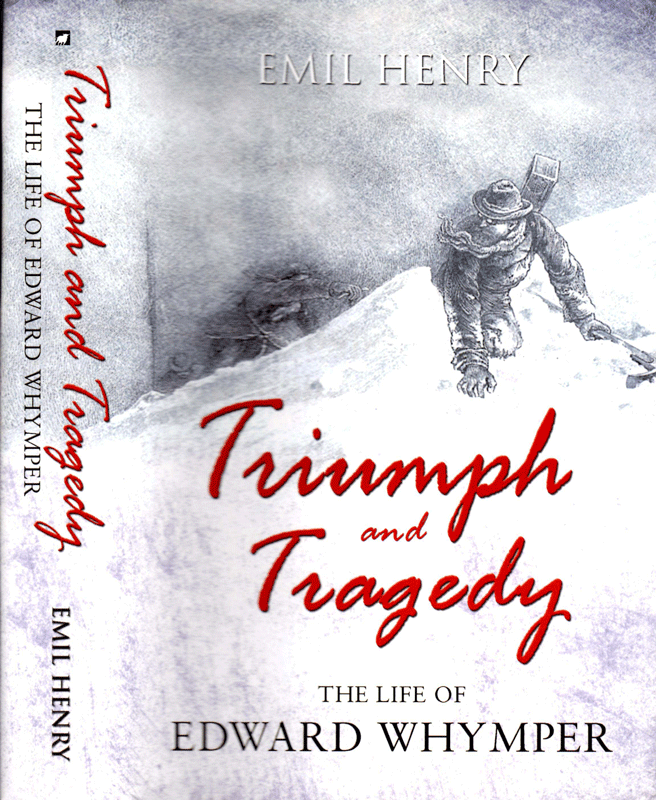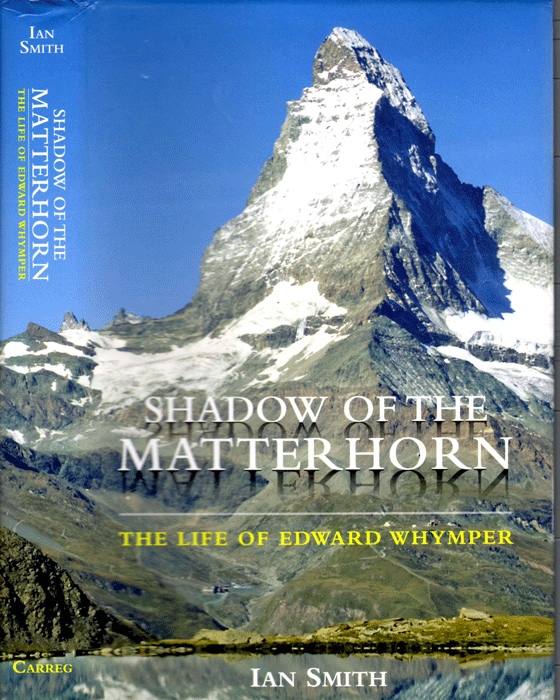It was one of those rare tragedies that reverberate down the ages: nearly 150 years ago seven men reached the summit of the most coveted--and the last--major unclimbed peak in the Alps. In their jubilation they cascaded rocks down the far side to alert their defeated competitors. But an hour later on the descent one man slipped, knocked off another, two others were pulled off. And then the rope broke, leaving four climbers to plunge 4000 feet to their deaths, while the three stunned survivors clung to the rocks. It remains the most famous accident in mountaineering history.
The protagonist of this catastrophe on the Matterhorn was a 25-year-old Englishman, Edward Whymper, who had spent five years trying the peak that many thought inaccessible. It had been over 70 years since his last biography (by Frank Smythe, 1940; a shorter one by Walt Unsworth appeared in 1965). Then in 2011, two were published. They confront two difficulties bequeathed by Whymper: he wrote extensively, and very well, about his climbing and exploration; and he said almost nothing about the rest of his life. He left two memorable books: Scrambles Amongst the Alps and Travels Amongst the Great Andes of the Equator. Extensive sections of these biographies, Henry’s especially, are passages from Whymper. Yet while Whymper described his climbing and exploration in great detail, he left readers with only surmise about anything else. He was an expert wood-engraver; both authors provide many examples of his work. They can say little of his feelings about that work, however. His affective life is even more obscure. He made few strong attachments. His most emotional relationship may have been with Charlotte Hanbury, a woman ten years his senior whom he met late in life and who died a few years later. It is tempting to call Whymper a life-long bachelor, but two days short of his 66th birthday, he married Edith Lewin. She was 21.
Although it produced a daughter, this amazing union did not last long. It is hard to know what prompted it. Both Henry and Smith quote the claim of Whymper’s nephew Robert that his sex life “was distinctly cave-man,” but neither biographer can say who the cave-women were. Smythe dismisses this “unfortunate marital affair” in a single paragraph. Both new biographers speculate about it at greater length, but cannot fully elucidate the mystery. Smith provides a fascinating footnote: Whymper’s daughter Ethel Rosa, when she was 22, climbed the Matterhorn by a harder route than her father’s.
No doubt Whymper will always be remembered for the Matterhorn, but his later life was remarkable. Always captivated by the unknown, he made two trips to Greenland and several to Canada. His most important venture was to the almost untouched high volcanoes of Ecuador. For some six months in 1870 he made many first ascents, including the country’s highest, Chimborazo. He was accompanied by Jean-Antoine Carrel, his guide and rival on the Matterhorn, and Carrel’s cousin Louis. Whymper’s book on the expedition (reprinted in a fine edition in 1987) includes long sections about insects and plants, complete with drawings. These were a notable contribution to the scientific record. Whymper was nothing if not meticulous. He kept diaries at various times. The earliest have been separately edited by Ian Smith, Written in his adolescence, they seem the work of someone much older, full of sophisticated observation and dry wit. They give a vivid if sometimes terse picture of early Victorian London. Feb. 29, 1856: “No news. Cold. Several more murders.”
Both these books satisfy the need for an updated account of Whymper. Smith’s spends more time on the post-Matterhorn years and gives a much fuller record of the Greenland trips. He also provides excellent color photographs of many of Whymper’s climbs in the Alps. They remind us how daring were these achievements in the days before crampons and reliable ropes, much less pitons and slings. Although often climbed, the Matterhorn remains a dangerous mountain. More than 400 have died on it since Whymper’s ascent.
Whymper must have his famous last word: “Climb if you will, but remember that courage and strength are nought without prudence, and that a momentary negligence may destroy the happiness of a lifetime. Do nothing in haste; look well to each step; and from the beginning think what may be the end.”


Return to climbing page.
Return to home page.